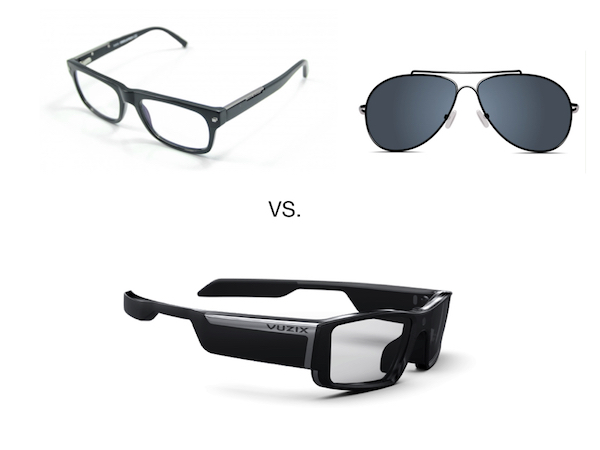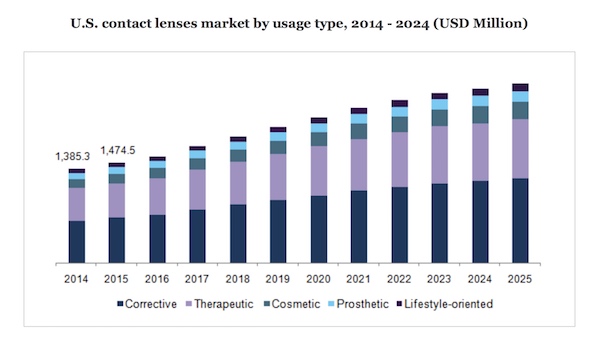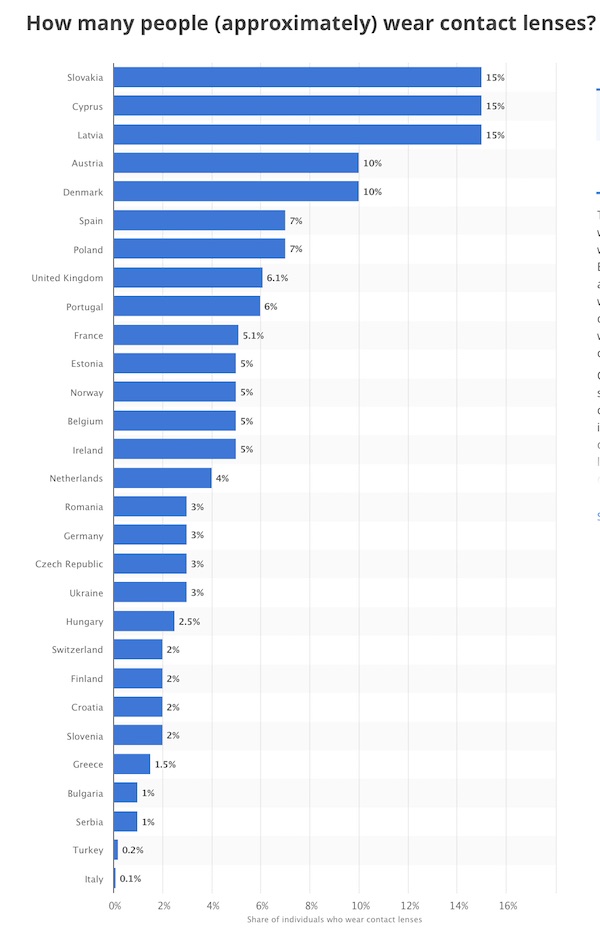While we are still waiting for Augmented Reality Headsets to create a new market segment that can drive the display industry for years to come, we have to realize that this development may take much longer than we expected in the last few years. I want to present another reason why AR headset have a tough time penetrating the market in numbers that are significant to the display industry.

That reason is very simple the fact that AR glasses are still glasses and very nerdy at that.

We are adding parts to glasses to make them look bulky and high tech, however that is not the way trendy glasses are. Even old style glasses have much thinner frames than any of the AR glasses today. This opens the question of who would wear this type of glasses. There are two types of people, those who need glasses for vision impairment or protective glasses (sunglasses, etc) and those who do not. According to a report from the World Economic Forum (June 2016), there are about 7.4 billion people on this earth and 4.2 billion need some form of eyeglasses. In addition 2.5 billion to not have access to the glasses they need. This leaves 1.7 billion people that wear corrective eyeglasses today and 3.2 billion who do not need eyeglasses.
WEF (June 2016) – Need for Glasses in the World
While this is a substantial market base, as a group used to wearing glasses, many AR glasses do not allow people to wear their corrective lenses unless they are wearing contact lenses. This brings up an interesting point of why are people using contact lenses instead of eyeglasses? Aside from technical reasons because of specific corrections that require one or the other lens form factor, the decision is based on economics or style. The person decides what fits better to their personal circumstances.

Grandview Research shows a continuous growth in the US contact lens market in coming years. Globally, the US contact lenses market is by far the largest market. Interesting is the large percentage they show as ‘Lifestyle-Oriented’ usage. Other reports show that the percentage of contact lens usage varies widely by country. For example in Europe different countries have very different percentages of contact lens usage versus eyeglass usage (Statista).
 Statista: Contact Lenses usage in European Countries
Statista: Contact Lenses usage in European Countries
This shows that the use of contact lenses is a choice that depends heavily on local taste and fashion trends. What is trendy in one country may not be trendy in another. The differences are quite significant within the European Union. Other regions with lower income per capita are facing more of the question of how to pay for eyeglasses. However, these may also not be the most likely adoption centers for AR glasses anyway.
In the US the numbers varyia little based on the source, but most agree that over 60% of the people need vision correction (with 325 million this means that 195 million need glasses). Of these 195 million, 45 million or almost 25% are wearing contact lenses, at least sometimes.
What I am suggesting is that wearing glasses is, in large parts of the world, not seen as a positive thing. Not only are glasses a handicap in terms of the vision field the user can see, they are prone to get dirty and damage easily when dropped. Contact lenses remove this stigma to a large degree, but as we can see in the Statista graph different countries react to this very differently.
If there is a resistance to wearing glasses if your eyesight does not require correction it will be more difficult to convince about 40% of the addressable market to wear glasses at least in public. There needs to be an important and strong driver to overcome this barrier to wearing glasses for this group. On the other hand most people will wear sunglasses for protection outside. This is one of the reasons why many AR glass developers are striving to make the sunglass-style AR headset. However, this is still many years away from becoming a reality, which means that glasses are a lifestyle choice, which is not necessarily in favor of AR headset adoption.
In short, AR headsets have a problem in the market because they are glasses that people do not want to wear in the first place. In a certain way one could argue that the same thing was part of the downfall of 3D glasses. People do not want to wear glasses unless it is necessary. This leaves the question what AR application is being viewed as a necessity by the consumer to make AR headsets a popular choice? At the same time AR is becoming a widely used technology as an app for the omnipotent smartphone. Most people are associating AR with the smartphone and not with some form of nerdy headset. Maybe it is time to think of these market forces when we create market forecasts for AR. At a minimum I would expect analysts breaking down the AR market by software using smartphones versus AR headset sales. The results may be sobering for the hardware guys. (NH)

